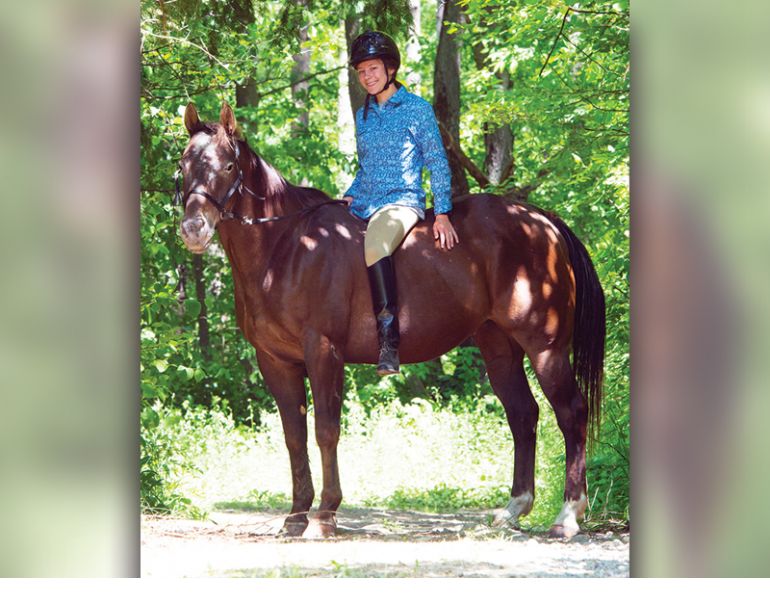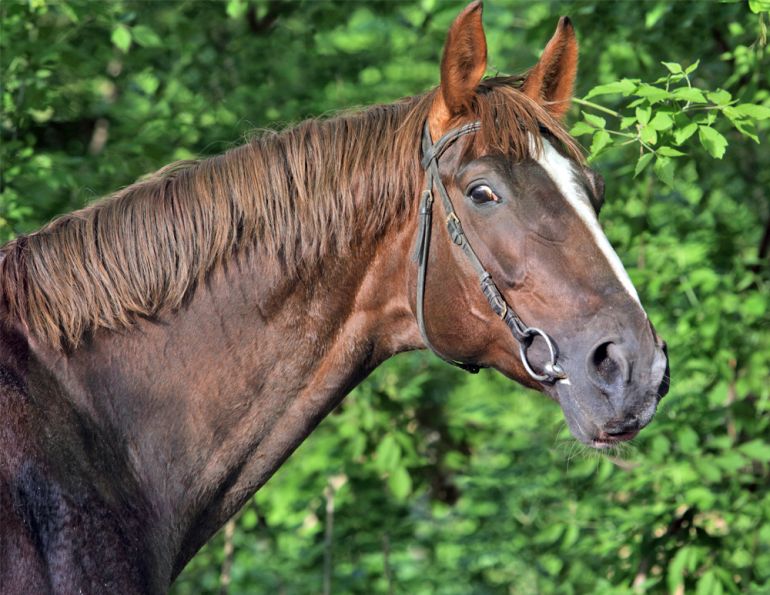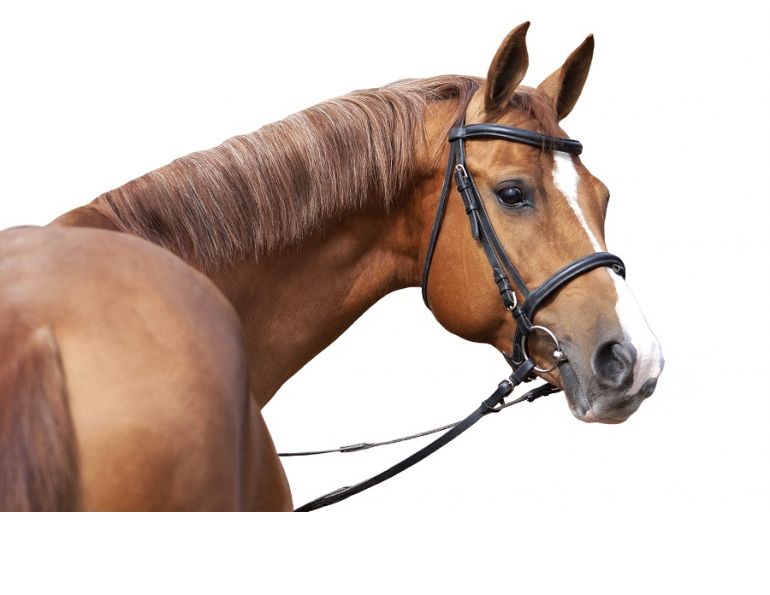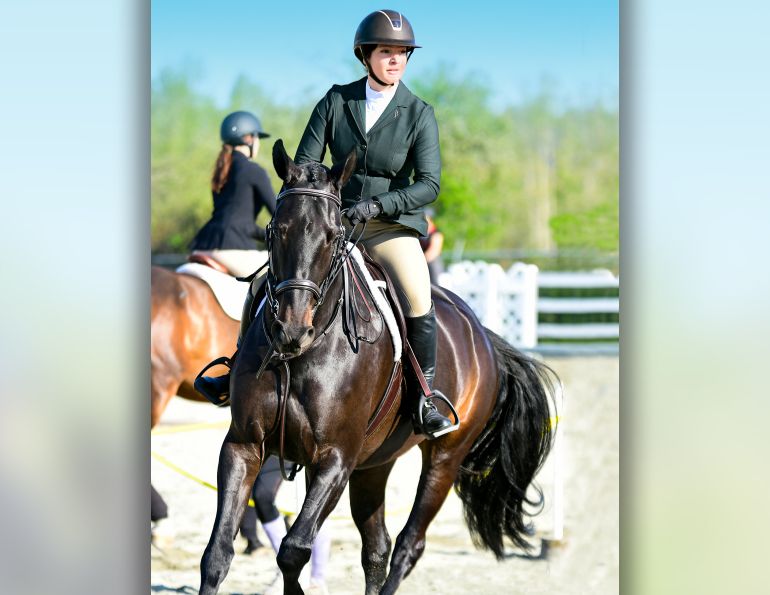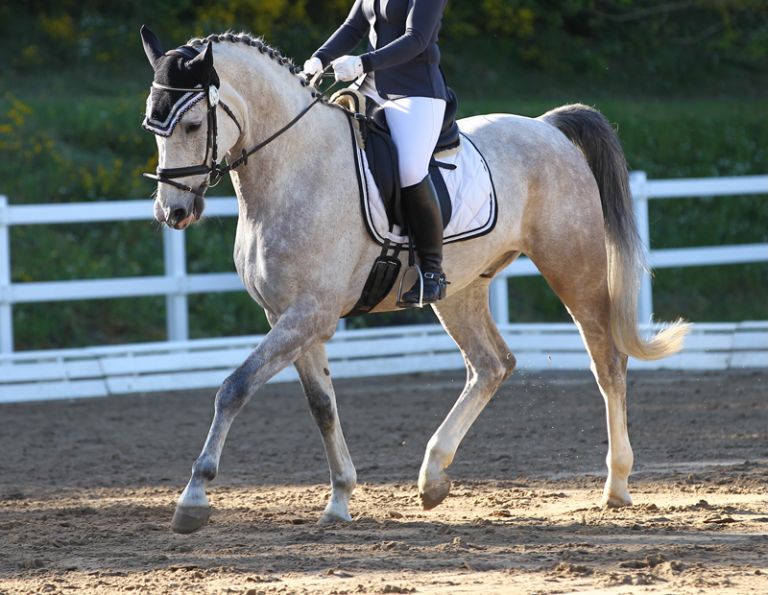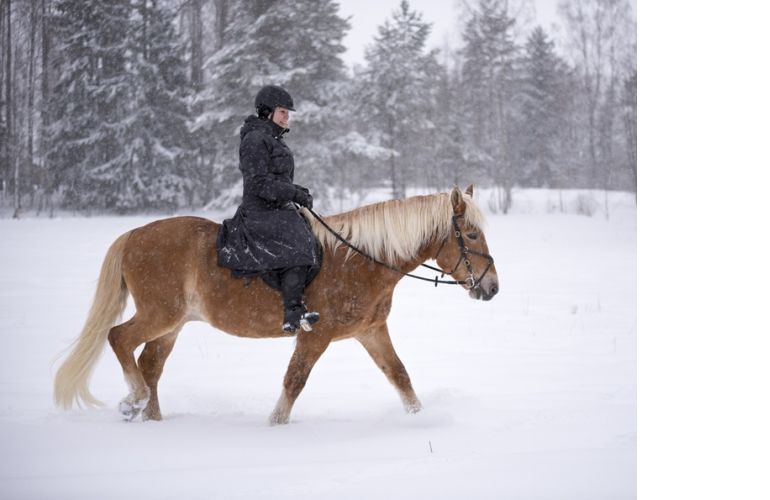By Jochen Schleese, CMS, Equine Ergonomist
Many equestrian articles focus on addressing issues such as a horse that rushes, stumbles, or refuses to move forward. Often, the rider is assumed to be at fault, with solutions centred on changing rider technique or seeking veterinary advice.
Yet in some cases, what looks like disobedience or poor training may stem from something much simpler — a saddle that does not fit correctly. An ill-fitting saddle can press on sensitive reflex points, triggering instinctive reactions from the horse rather than deliberate behaviour.
Of course, underlying health conditions like illness or lameness can also cause negative responses. But before calling your veterinarian, it is worth arranging a thorough saddle evaluation. A certified saddle fitter is trained in equine anatomy and biomechanics and can identify whether your horse’s discomfort is due to improper saddle fit — and how to correct it.
It is widely accepted that horses do not consciously behave badly; rather, they react to outside stimuli. A variety of unwanted behaviours can be caused by a poorly fitting saddle or an incompetent or untrained rider, or both. How and where a rider’s weight is carried on the horse’s back can make a huge difference to the horse’s comfort level, and the horse can develop resistant or evasive behaviours when a rider’s aids are misunderstood or mishandled. Frustration mounts when a rider does not get what she is asking for, and an unpredictable or dangerous situation could be the result.
Some of these adopted behaviours become stereotypical. They are not vices, as vices would infer that the horse is at fault; instead, their reactions are responses to an external stimulus, such as a poorly fitting saddle.
If the saddle puts pressure on the reflex points along the spine because of a gullet channel that is too narrow, or the saddle twists during movement because of natural asymmetry, the horse will reflexively lower its back to escape the pressure or pain. The goal to have the horse engage its back becomes unachievable. The forward impulse and momentum is lost, the rider is out of balance, and the horse becomes defensive and won’t go on the bit. The result is a frustrating experience for both horse and rider. The horse would like to respond to the rider’s aids, but the pressure on his reflex points inhibits his ability to do so.

This saddle has slipped to the right and is lying on the vertebrae on the left hind. Pressure here will often cause symptomatic lameness in the right hind. Photo courtesy of Schleese
Think about your own reflexes. Even when your doctor asks you to refrain from kicking out when he taps your patella, your reflexes instinctively react with leg movement which you are unable to control.
A saddle that consistently puts pressure on the horse’s reflex points, known as cranial nerve 11, is not only uncomfortable for the horse but could eventually cause injury. For example, what happens when you give your horse the signal to move forward? If the saddle tree angle is too wide, or the tree width is too narrow, the tree is putting too much pressure on the reflex points and the horse cannot really comply. When the saddle hits the reflex point it hinders the horse’s ability to move. The horse’s actual instinctive reaction at this point is to drop his back, locking the shoulder, and rotating the pelvis. Despite best intentions, the horse instinctively will not, and more importantly, cannot move forward. He wants to obey his rider’s desire to go forward but needs to obey his own instincts to stay still.
It is a losing proposition for the horse physically and psychologically as the rider thinks his immobility is simply stubbornness and starts using spurs and whip.
Cranial Nerve 11 (CN11)
Horses evolved in North America over millions of years, adapting and evolving with their habitat. As climates cooled, forests retreated and grassland dominated. Horses became grazers and learned that herding and living in small groups enhanced their chances of survival. Social behaviours developed as well as combative behaviour among stallions. To protect harems and defeat opponents, stallions developed the instinct to bite their opponents in the wither area and literally bring rivals “to their knees.”
Stallions will also bite mares in the same area in preparation for mating – to stop them from moving forward in order to mount them safely. Predators will also attack in this same region of the neck to hinder the flight response and bring the prey down.
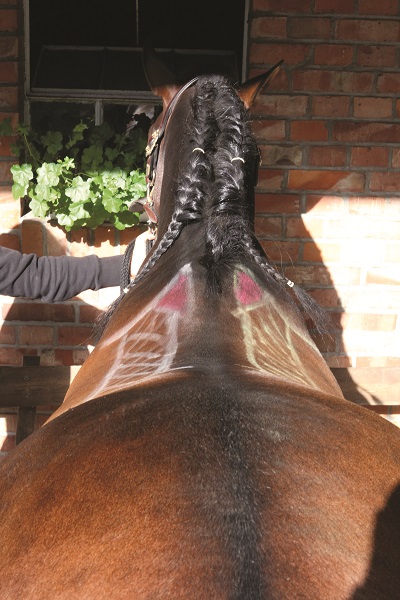
The white chalk drawing shows the actual saddle support area and where the saddle should lie. The red triangles on the withers area show the highly sensitive area where a saddle should never ever lie. Photo courtesy of Schleese
This reflex point in the wither area is known as cranial nerve 11 (CN11), and nature has determined three survival mechanism reflexes for this vulnerable spot. If the mare or the rival horse is bitten at that point, the nerve sends a signal to the brain that the movement in the upper arm and shoulder blade be blocked. The second signal ensures that the longissimus dorsi muscle (the long back muscle the saddle sits on and the largest muscle in the horse’s body) contracts, dropping the horse’s back so that the vertebrae fall into each other as in kissing spine syndrome. Kissing spines constitute a condition in which sections of bone attached to the vertebrae are too close and rub together causing pain. The third response is that the pelvis will rotate forward and open as a result of further contraction of the longissimus, opening the area in preparation for mating.
Improperly placed pinching gullet plates, lunging girths, vaulting girths, driving harnesses, and foregirths will achieve the same result as the stallion’s bite by acting like a vice grip upon the muscles in the wither region.
All three of these reactions will result in instinctive immobility for the horse. In nature these reactions are critical for survival and allow the stallion to mount the mare without being kicked, or ensure that the rival is immobilized during a fight for dominance.
The paradox is that we as riders want to achieve exactly the opposite. We want a horse with a loose, supple, and engaged back, with the ability to step under with the hind end. We want to take pressure off all the ligaments, tendons, muscles, and bones of the horse in order to keep it healthy and sound for a lifetime of enjoyment and harmonious riding. To achieve this we must ensure that there is no pressure on cranial nerve 11 from an ill-fitting gullet plate.
Bucking Reflex
This reflex point is located over the fascia behind the 18th lumbar vertebra. The fascia is the large sheet of connective tissue draped over the horse’s back and loins, and aids the abdominal muscles in supporting internal organs. The horse’s first reaction is to try to get rid of pressure from a saddle that is too long and pressing on the fascia over the transverse processes. These are the bony projections on each side and the top of the vertebrae which are sites for ligament and muscle attachment. Further indications of a saddle that is too long are the horse doing a pace during the walk (both front and hind legs on one side move together rather than diagonally with the opposite side), dragging the hind legs during the trot, or showing a four-beat canter.

The saddle should never lie on the lumbar vertebrae with their long transverse processes. These “floating ribs” cannot support any weight very well. Photo courtesy of Schleese
Girthiness
When using a short girth, watch that the buckles do not press on the edge of the pectoral muscles. For a long girth, attention must be paid to the same issue, but at the edge of the latissimus dorsi. The buckles can cause concentrated pressure points in these areas causing the muscle fibres of the triceps to contract as they try to avoid the pressure and soreness that often lead to rub marks. It is an instinctive self-protection measure.
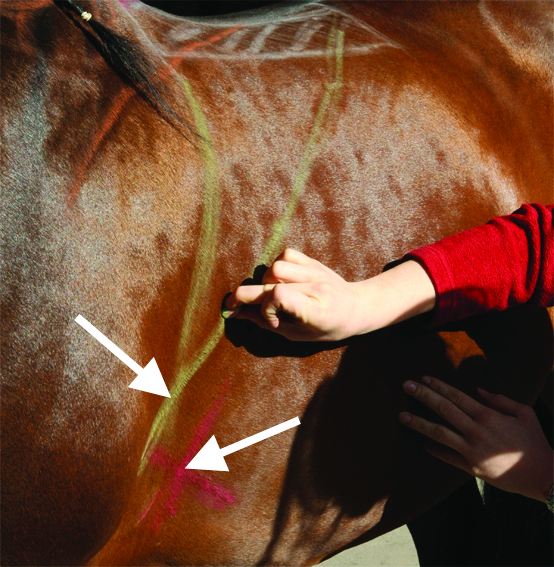
Where the two yellow lines intercept is where the triceps and the latissimus dorsi muscles cross. Where these two lines cross and behind the red “X” is the best spot for the girth buckle to lie. Photo courtesy of Schleese
The rider will have difficulty finding a good extension in the trot and will experience poor transitions between the gaits. The pectoral muscles need full range of contraction and relaxation to allow huge and natural extension. Only with complete freedom will the biomechanics work the way they should.
If either the panel points or the billets exert pressure on the subscapular and thoracodorsal nerves, the natural reflex from both or either of these nerves will also cause the triceps to contract, inhibiting movement in the front. The horse moves like a “sewing machine” (on the spot, more or less) and tripping or stumbling can also result.
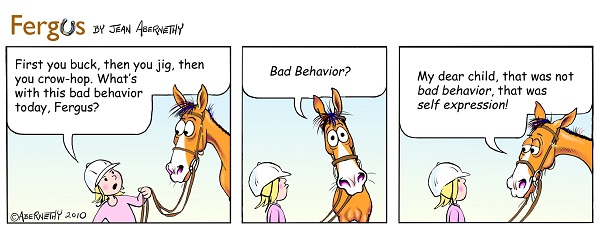
Used with kind permission Jean Abernethy.
For more information visit Schleese Saddlery - The Female Custom Saddle Specialist • Schleese or read Suffering in Silence: The Saddle Fit Link to Physical and Psychological Trauma in Horses.
Related: How to Find the Perfect Horse Riding Gear
Related: The Science of Tack and Training Aids
Main photo: iStock/SimonKR







